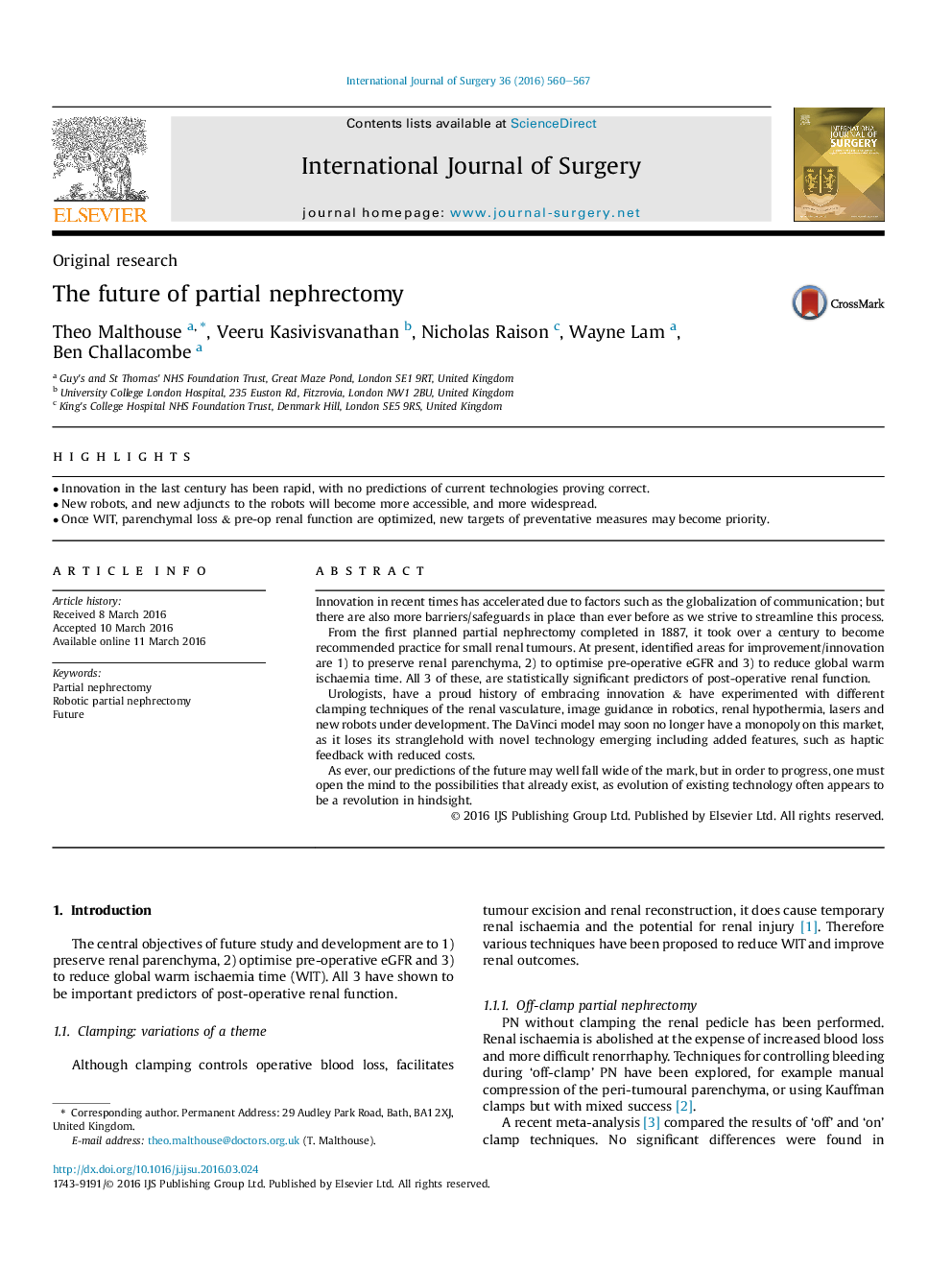| Article ID | Journal | Published Year | Pages | File Type |
|---|---|---|---|---|
| 5731947 | International Journal of Surgery | 2016 | 8 Pages |
â¢Innovation in the last century has been rapid, with no predictions of current technologies proving correct.â¢New robots, and new adjuncts to the robots will become more accessible, and more widespread.â¢Once WIT, parenchymal loss & pre-op renal function are optimized, new targets of preventative measures may become priority.
Innovation in recent times has accelerated due to factors such as the globalization of communication; but there are also more barriers/safeguards in place than ever before as we strive to streamline this process.From the first planned partial nephrectomy completed in 1887, it took over a century to become recommended practice for small renal tumours. At present, identified areas for improvement/innovation are 1) to preserve renal parenchyma, 2) to optimise pre-operative eGFR and 3) to reduce global warm ischaemia time. All 3 of these, are statistically significant predictors of post-operative renal function.Urologists, have a proud history of embracing innovation & have experimented with different clamping techniques of the renal vasculature, image guidance in robotics, renal hypothermia, lasers and new robots under development. The DaVinci model may soon no longer have a monopoly on this market, as it loses its stranglehold with novel technology emerging including added features, such as haptic feedback with reduced costs.As ever, our predictions of the future may well fall wide of the mark, but in order to progress, one must open the mind to the possibilities that already exist, as evolution of existing technology often appears to be a revolution in hindsight.
